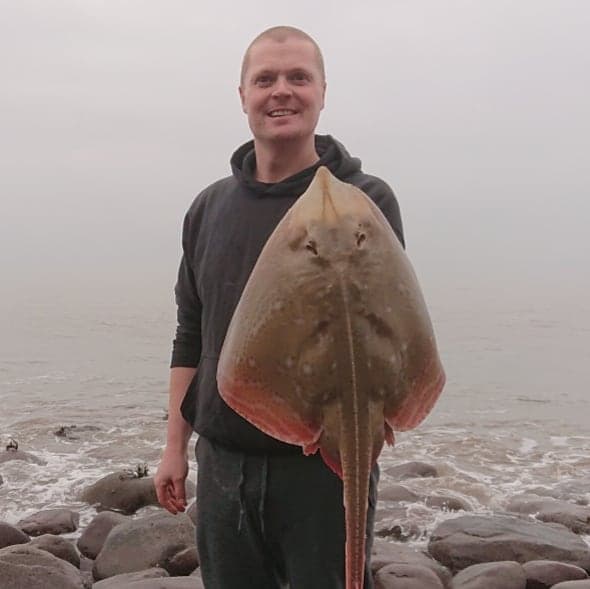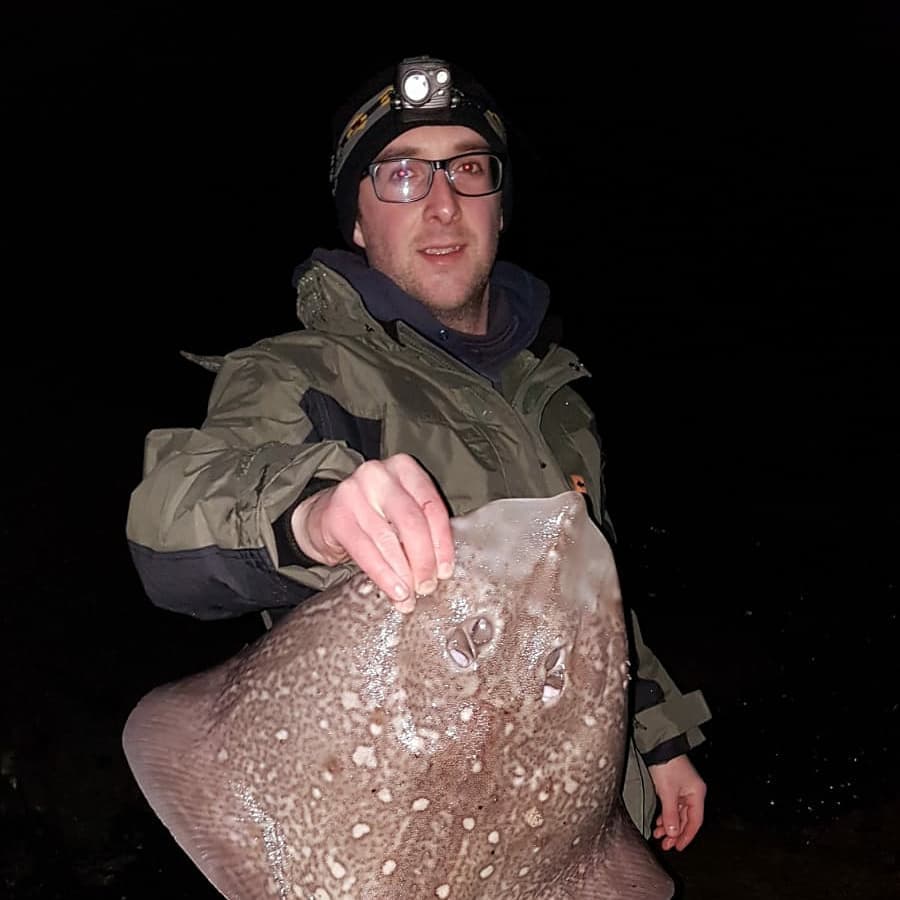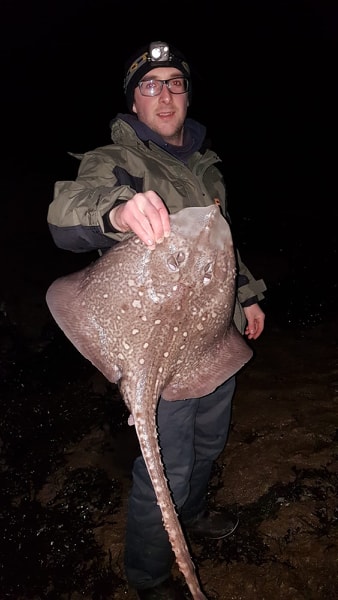Combe Martin SAC Member Jack Phillips boated this fine thick lipped grey mullet of 3lb 15oz whilst fishing from the families moored boat. The fish was tempted using good old bread flake.
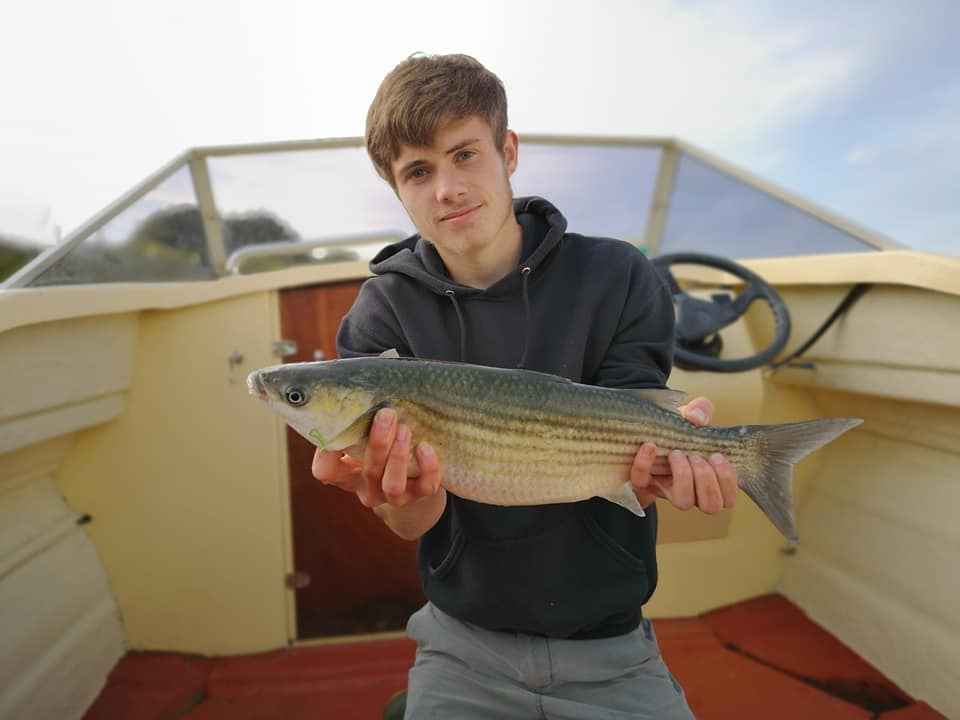
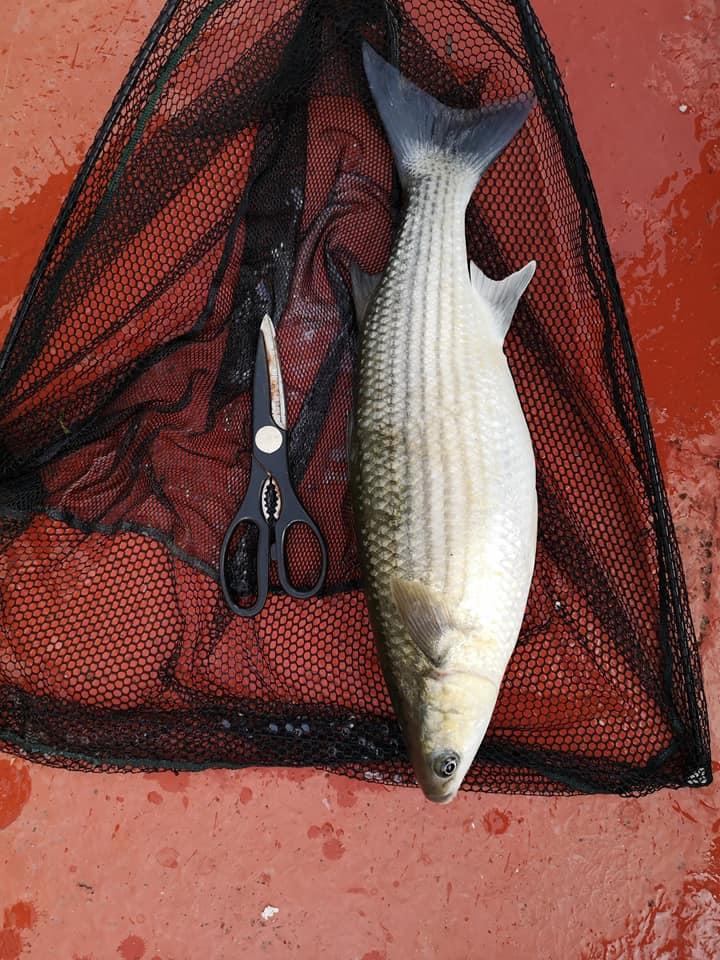
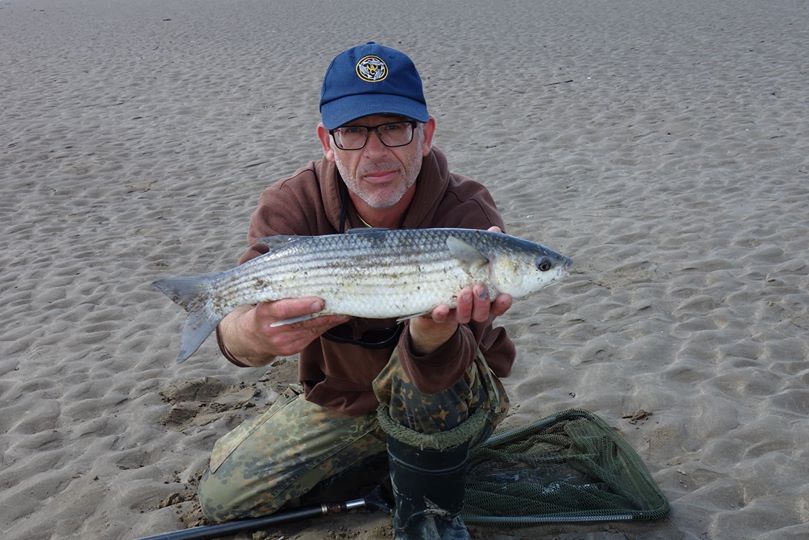
Mullet enthusiast John Shapland tempted this fine thick lipped grey mullet on his latest trip to a North Devon estuary mark. The fish came close to emptying Johns reel of line!
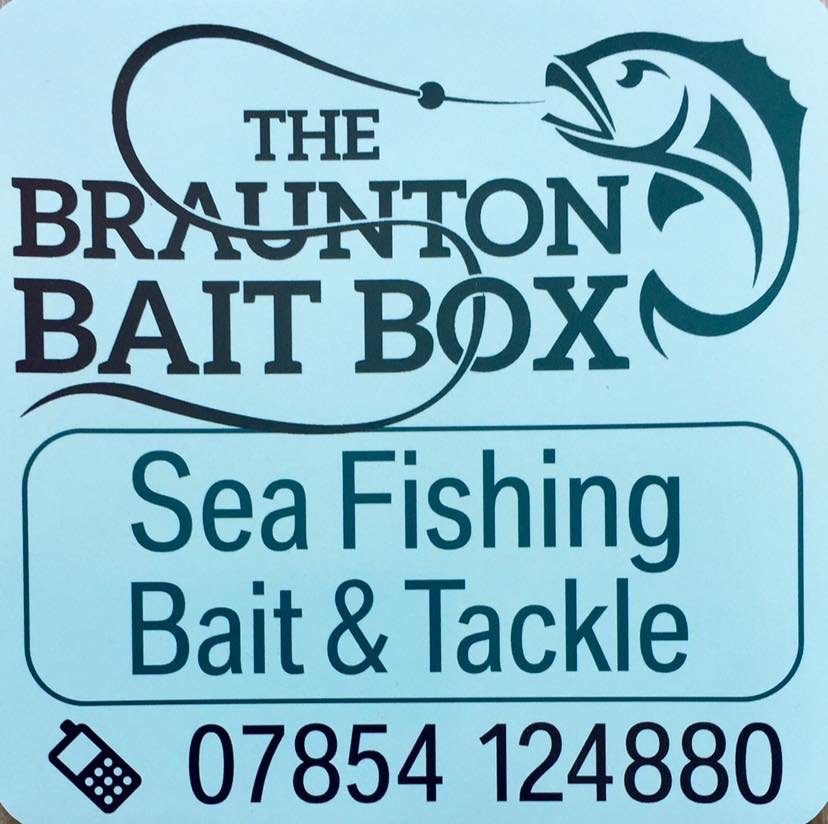 https://www.facebook.com/The-Braunton-Bait-Box-563693007044873
https://www.facebook.com/The-Braunton-Bait-Box-563693007044873
Bidefords 24 hour results
Andrew Clements landed superb brace of mullet to secure victory in Bideford & District Angling Clubs 24 hour rover.
1st Andrew Clements – thick lipped mullet 5lb 2.25oz 128.516%
2nd Andrew Clements – thick lipped mullet 5lb 0.5oz 127.344%
3rd Nathan Clements – smooth hound 9lb 13 98.125%
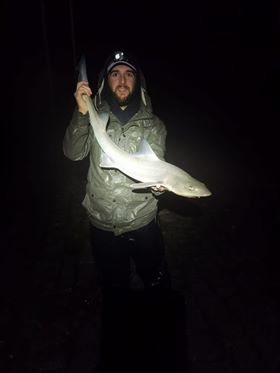
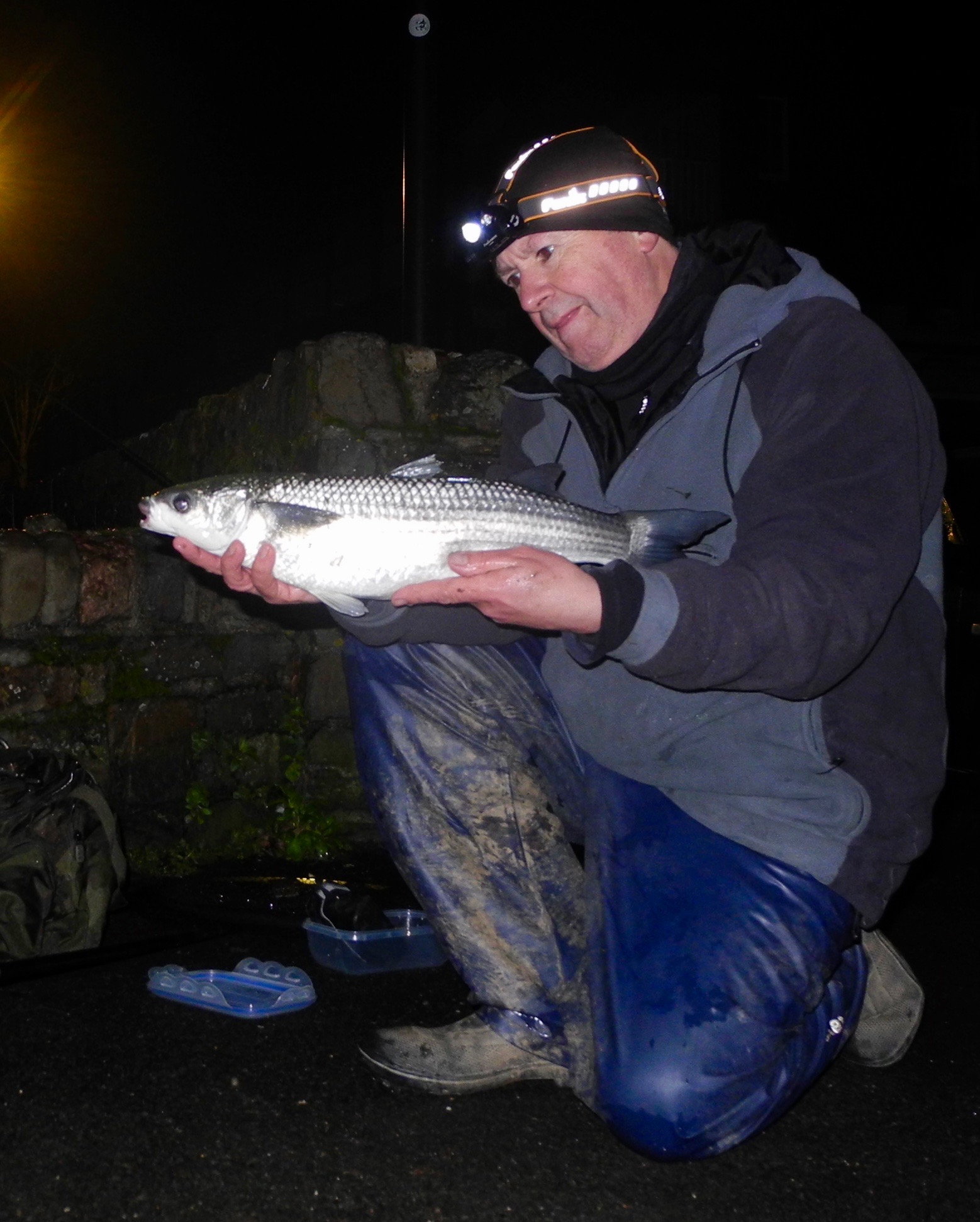
There was a time just a couple of decades ago when winter mullet were not considered a worthwhile winter target unless you fished the far West of Cornwall or the Channel Islands. Things have changed though and recent seasons have seen North Devon anglers landing mullet throughout the winter months. Just to clarify I am talking about thick lipped grey mullet and not thin lipped mullet that sometimes shoal up in large numbers in certain locations.
I set out this afternoon in search of an elusive thick lip but my optimism was lower than normal after receiving reports that the mullet were very scarce. On setting up I peered into the clear water hoping to glimpse a mullet but none showed. As the tide pushed in the rod tip trembled a couple of times; if there had been the slightest breeze I would not have seen the indications but on bringing in the baits the fluffy ends of the bread were gone a sure sign that mullet were present?
I followed the tide in and my confidence was boosted when I glimpsed a silver flank turning. Mullet were present! The light faded and I peered into the clear water beneath the street lights a couple of shadows drifted across the rocks. I Lowered a baited rig with two flakes of soft white. A good sized mullet swam up to the bait and proceeded to play with bait. I watched fascinated as the mullet was joined by another fish each nudging the bait that seemed to occasionally disappear from view. Striking too early can often spook the fish better to wait for a positive movement of the tip. After 15 minutes of so I had probably cast to the mullet ten times with the fish removing the fluffy tail of the bait each time leaving a small piece on the hook each time. The mullet were feeding right beneath my position and I could watch them as they moved the bait causing the tip to tremble occasionally pulling round an inch or more causing me to strike in vain. Eventually I hooked the mullet and it splashed on the surface for a second or two before coming off the hook.
It was now almost high water and I thought my chance had gone. I moved down a few yards and flicked my baits out before walking back to the shallows to see how many mullet were present in the beam of my head torch. None could be seen and I thought they had moved out with the ebbing tide. I wonder back to my rod and started to dismantle my net. The tip trembled slightly! I put he net back together and watched the tip. As I put the net on the wall the tip surged over and a fish was on. Ten minutes later I was weighing a pleasing winter mullet of 4lb 2oz.
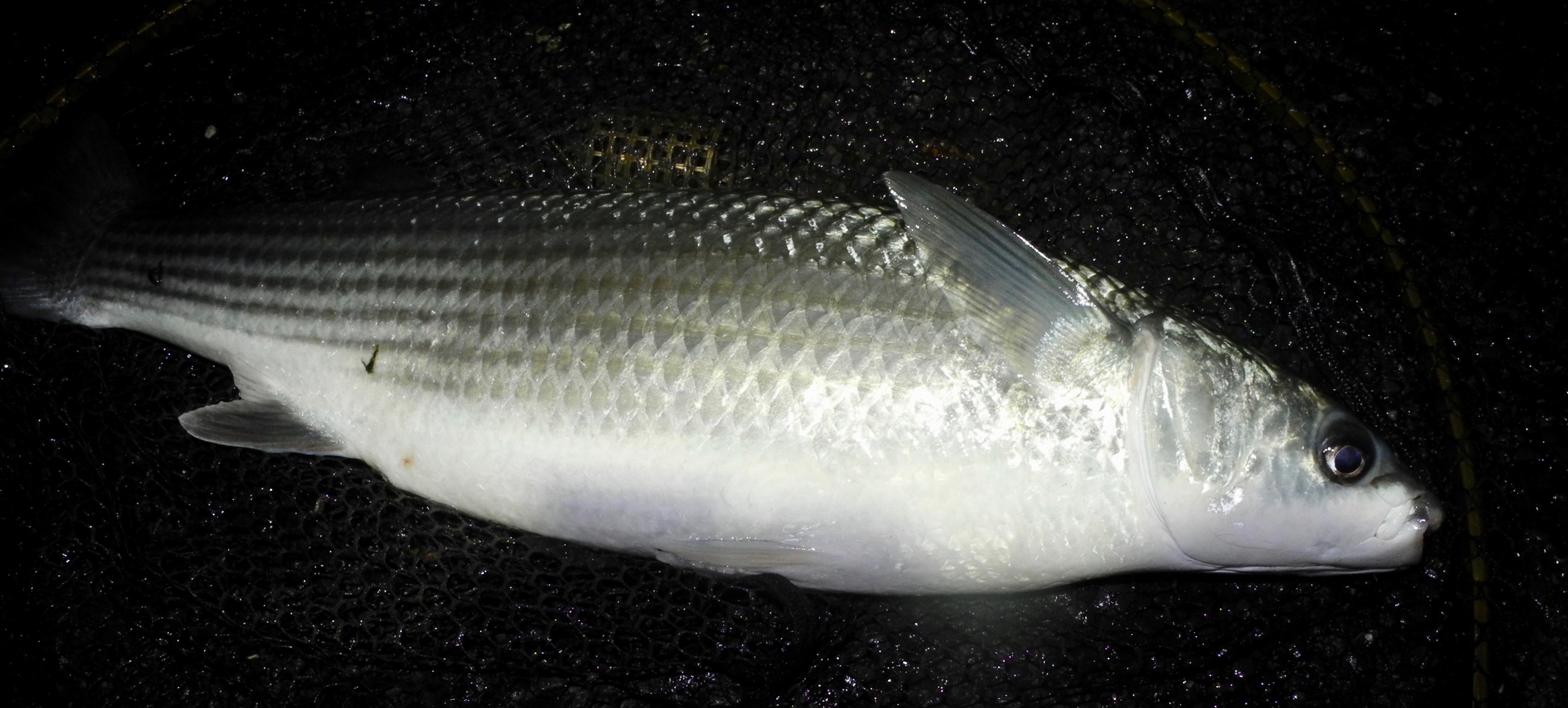
Fellow CMSAC Members John Avery and John Shapland have been travelling to marks on the Cornish coast to tempt some fine winter mullet John Avery landing a fine specimen of 4lb 14oz and John Shapland a new personal best of 5lb 1oz.
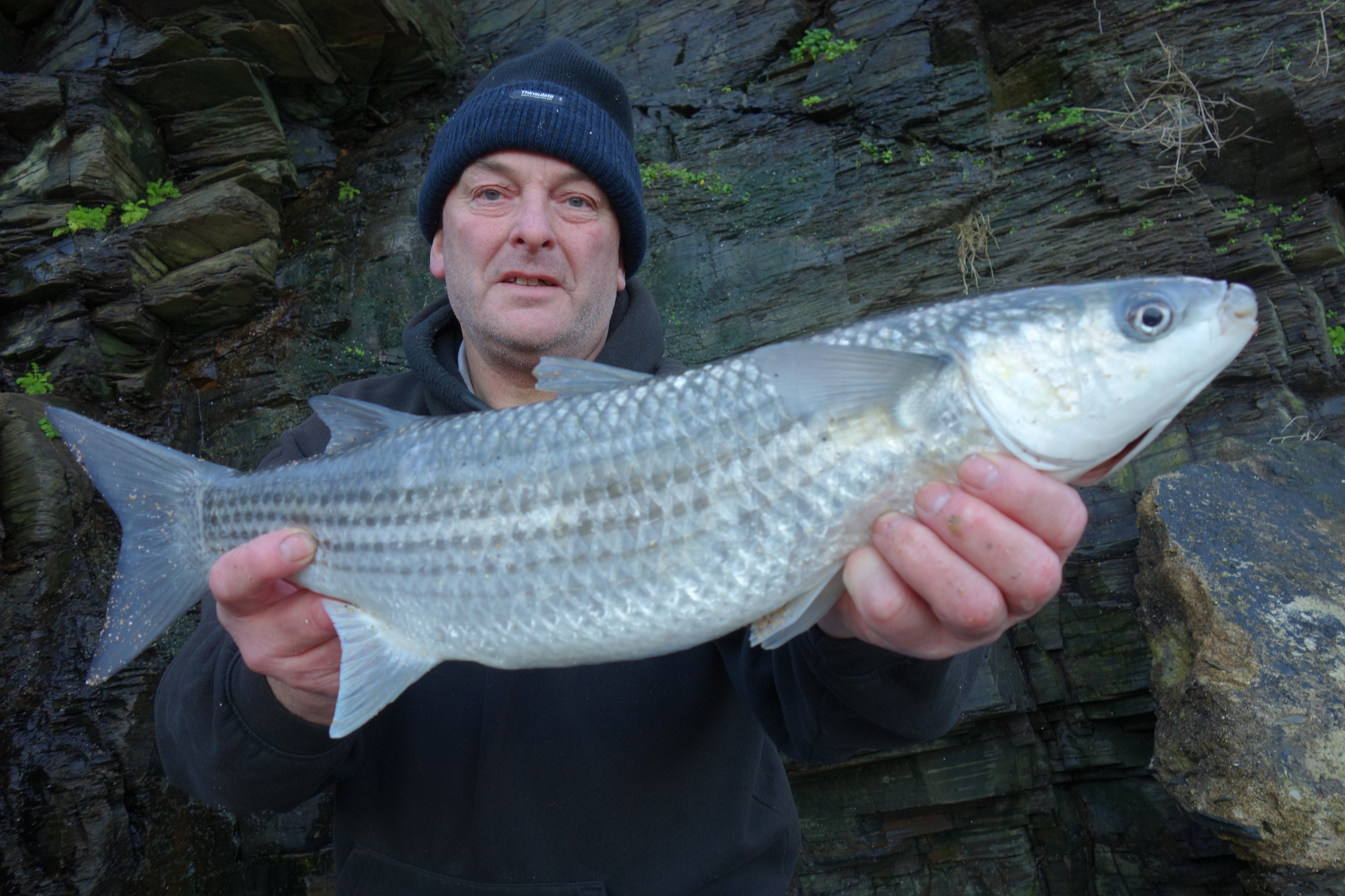
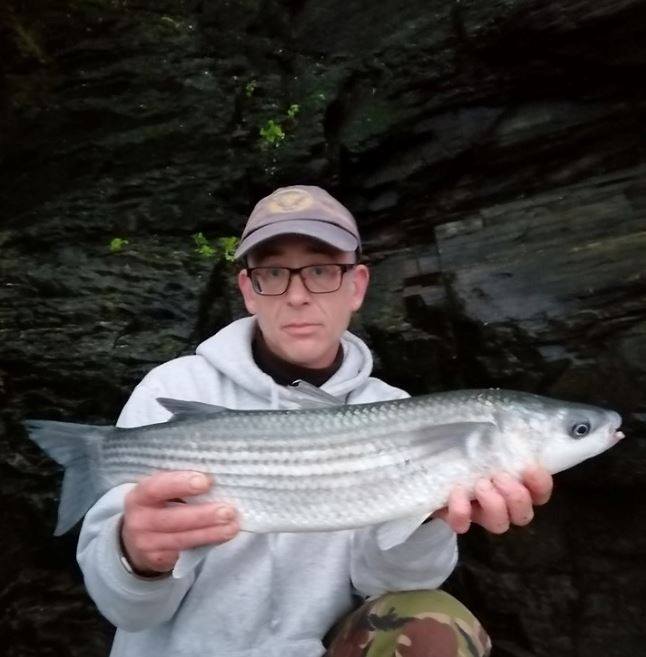
Rob Scoines had a weekend to remember landing two personal best fish whilst fishing in the clubs pairs match with only one fish counting per angler his second fish did not count in the competition but a thick lipped grey mullet of 4lb 7oz did and combined with my meagre dogfish of 1lb 13oz won us the pairs competition. Rob also secured the individual best fish prize with the mullet.
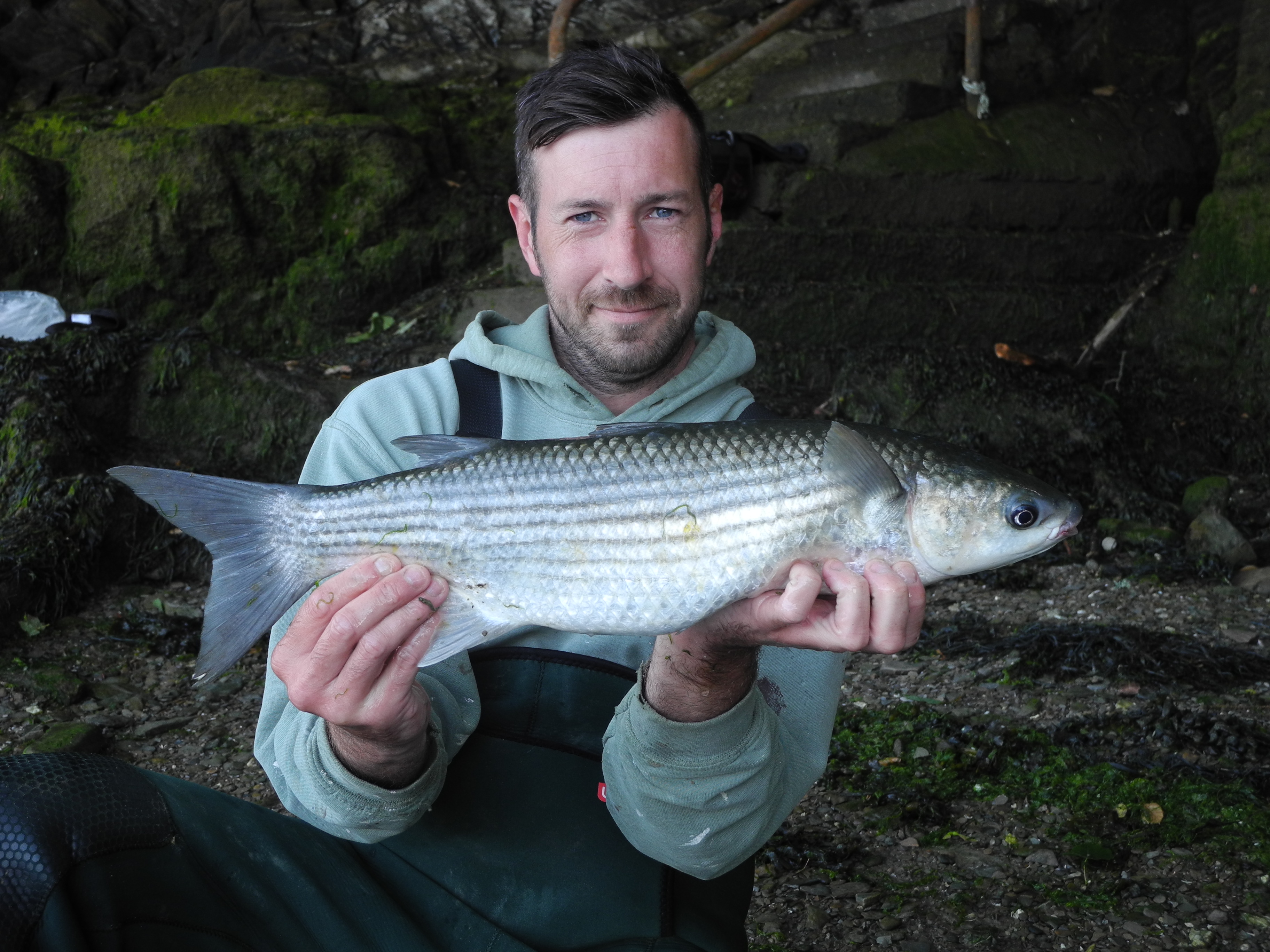
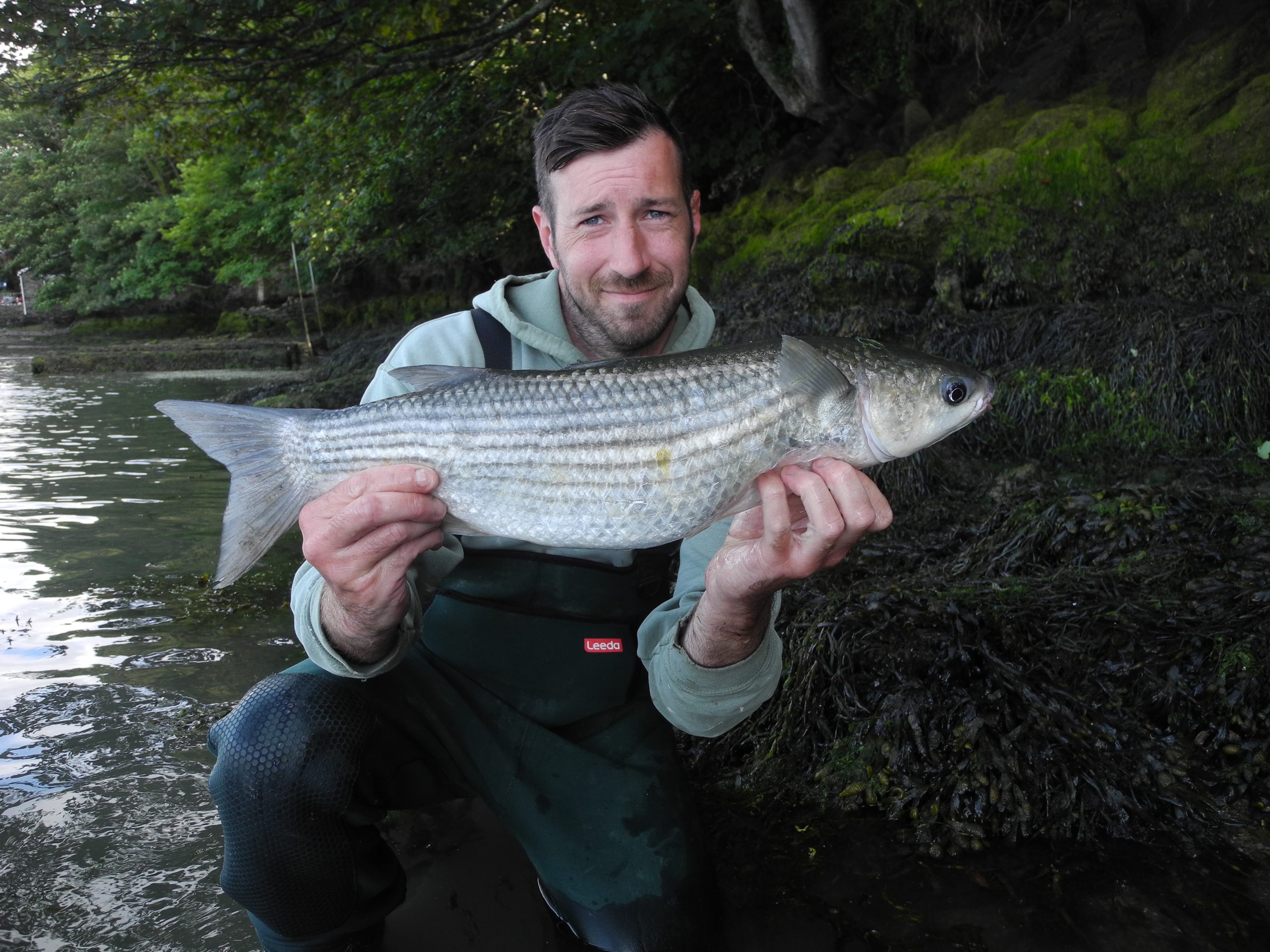
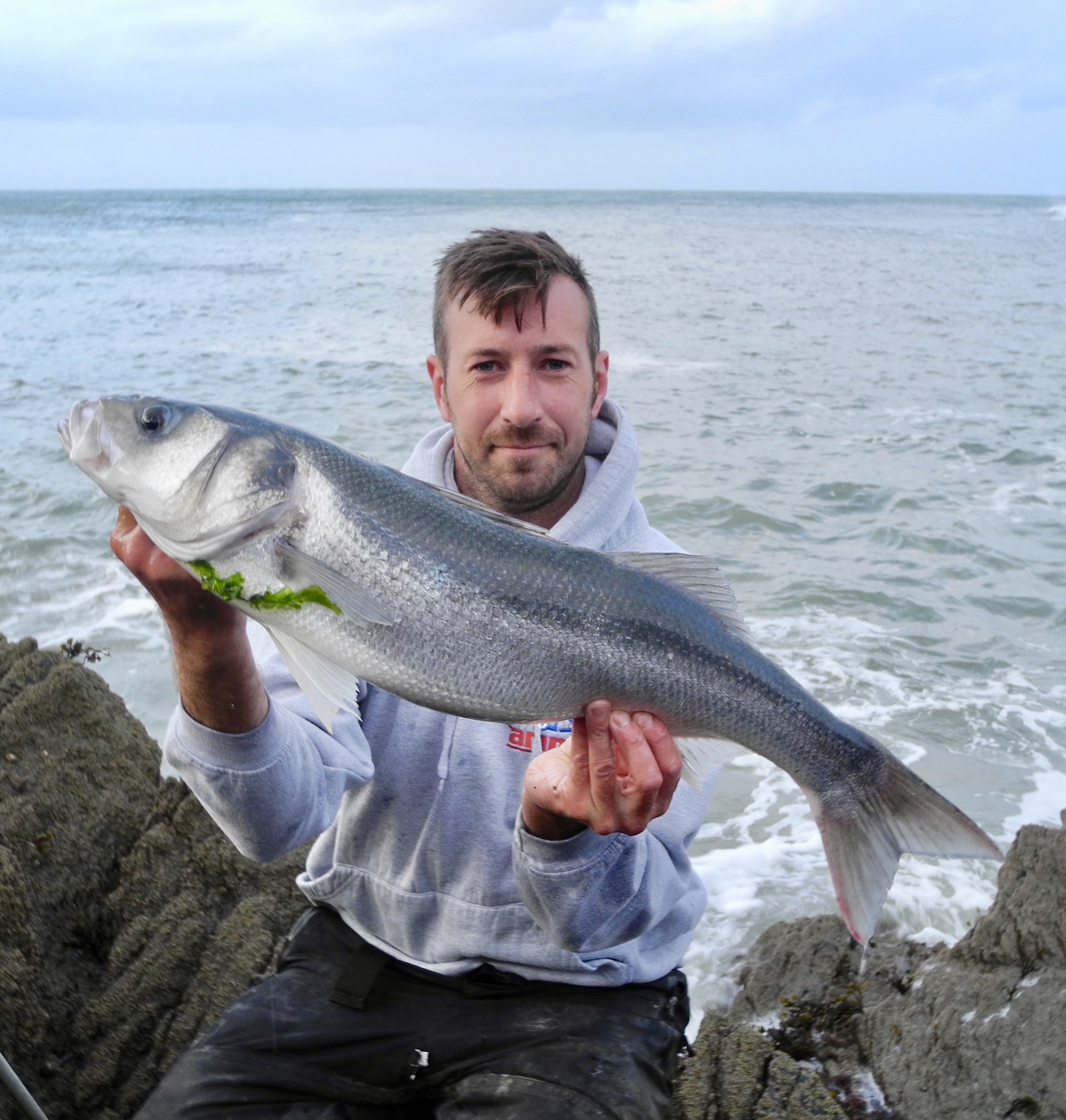
(Below) Mark Jones landed a fine brace of fish including a smoothound of 9lb 2oz and a thornback of 10lb 6oz.
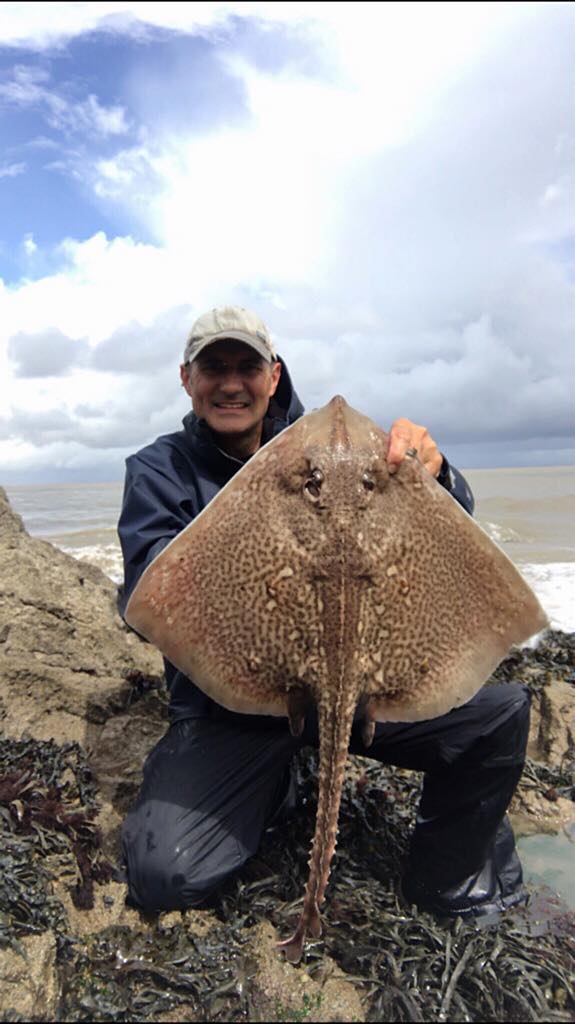
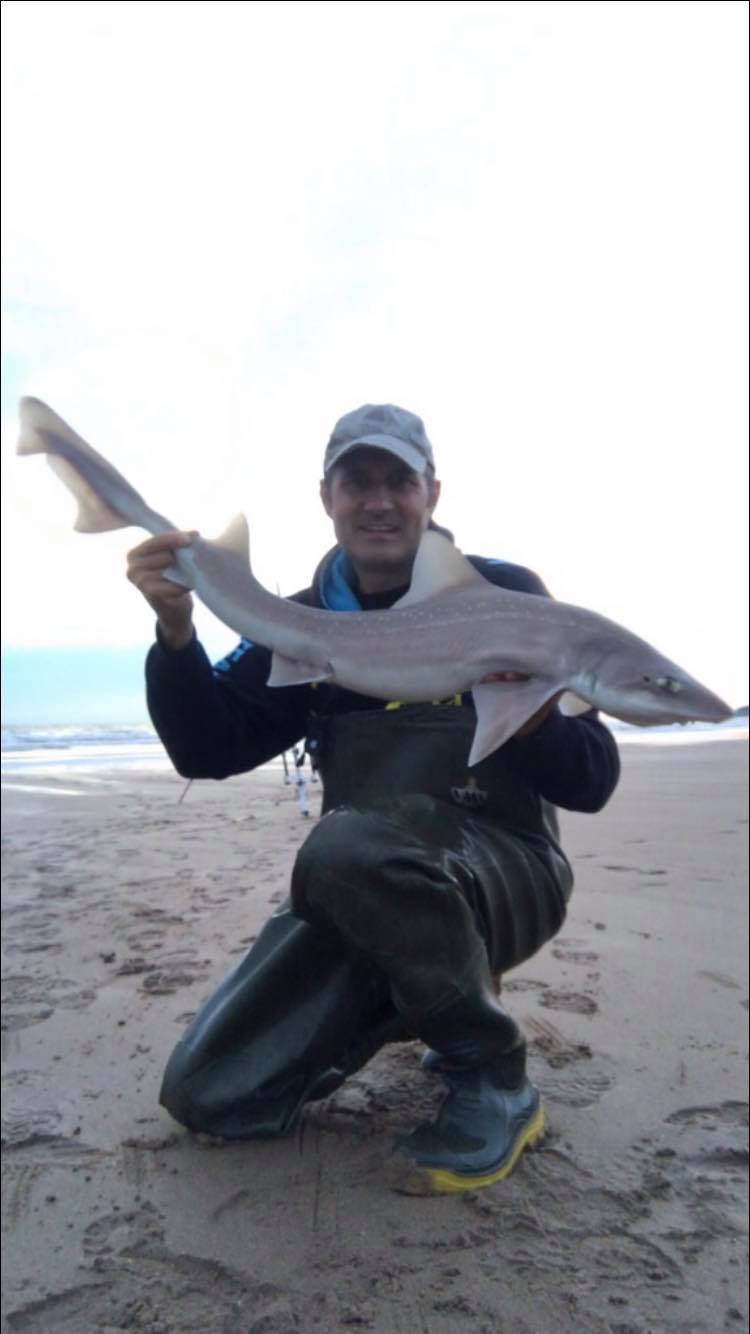
(Below) David Jenkins enjoyed sport in the estuary landing a brace of bass scaling 3lb 5oz and 3lb 2oz.
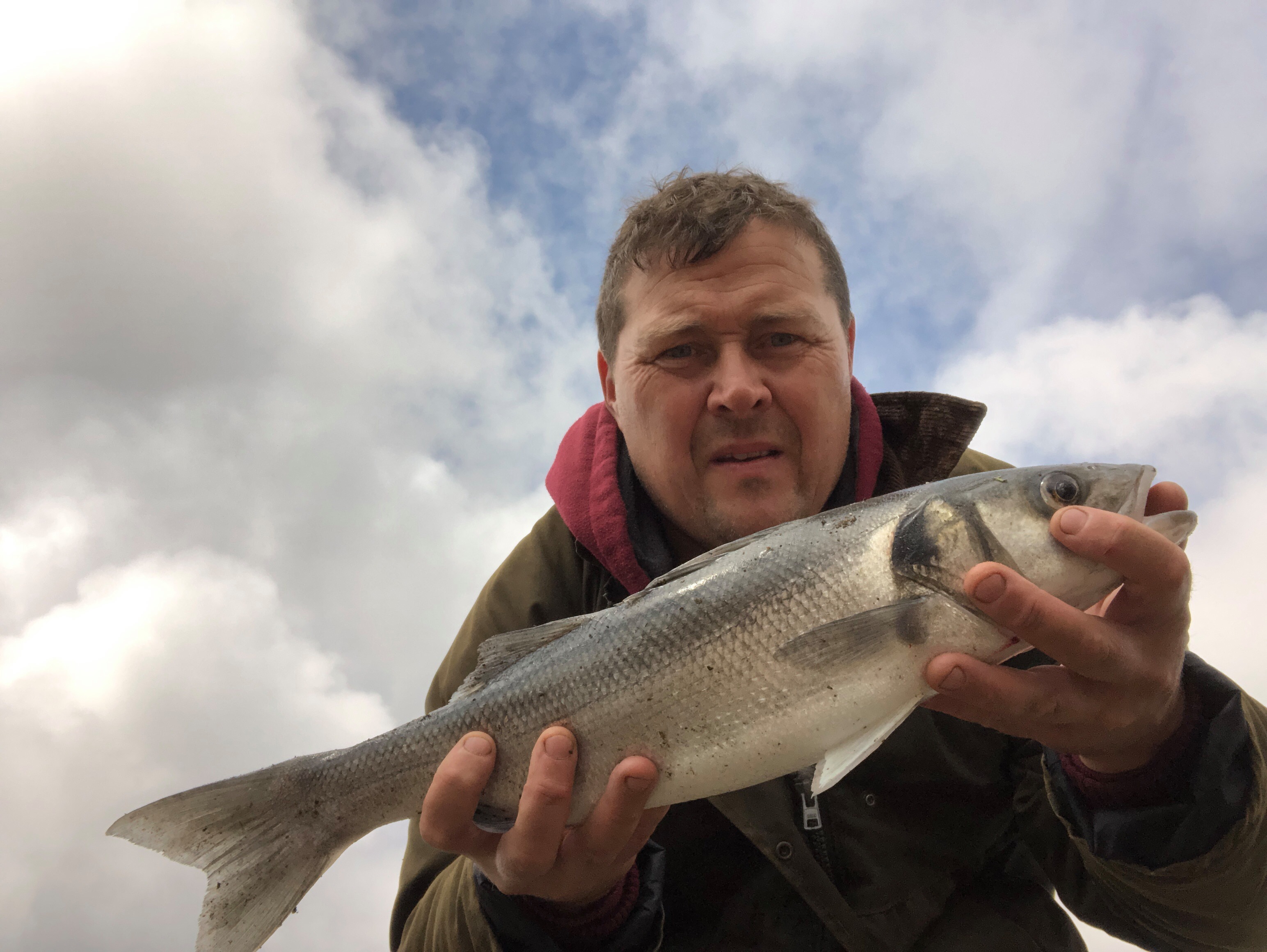
( Below) Ali Laird and his brother Ian Laird enjoyed a good session outside of the club match landing bull huss, conger, a codling and a bass. Best fish of the session was a bull huss scaling 10lb 1oz to the rod of Ali Laird.
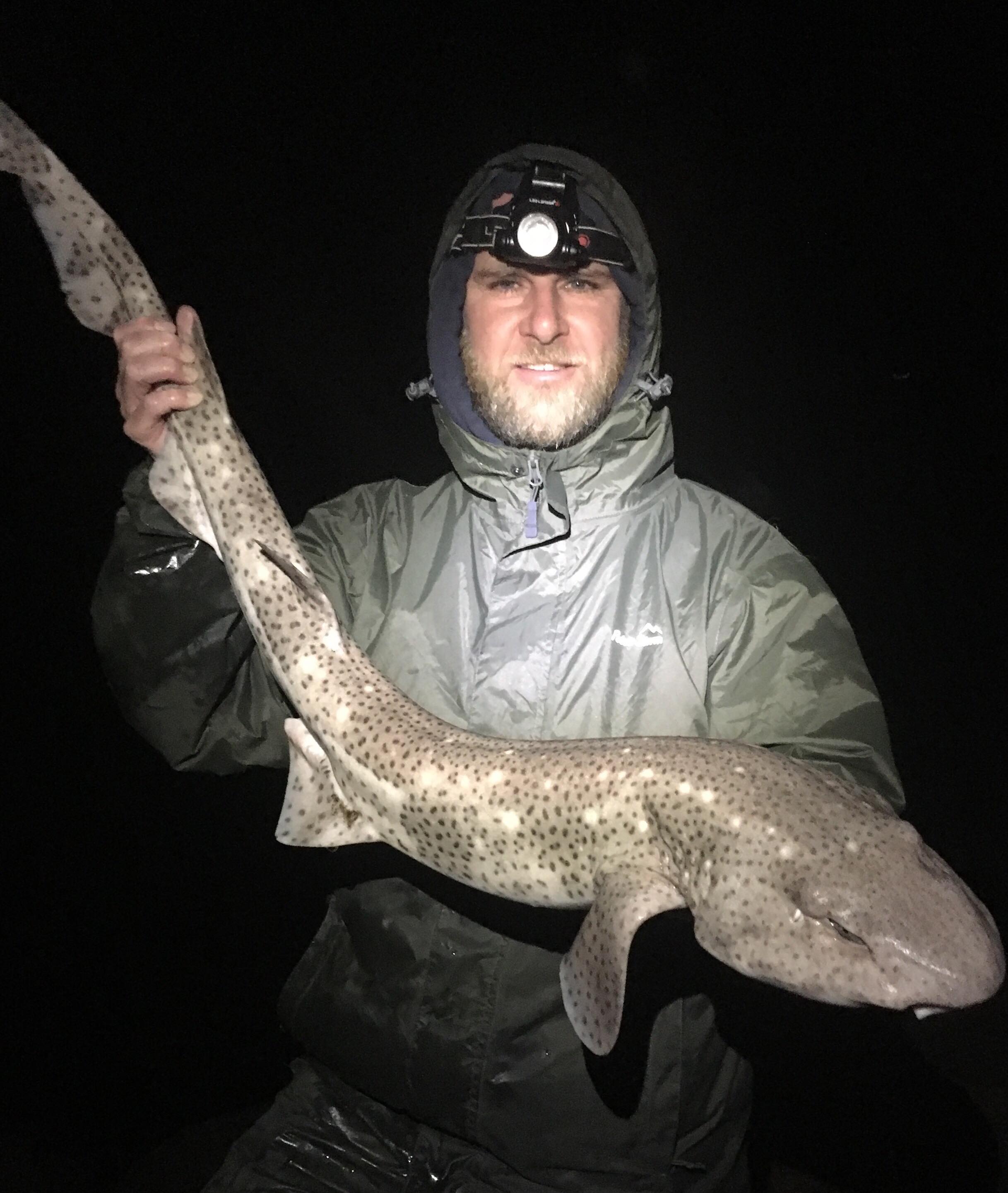
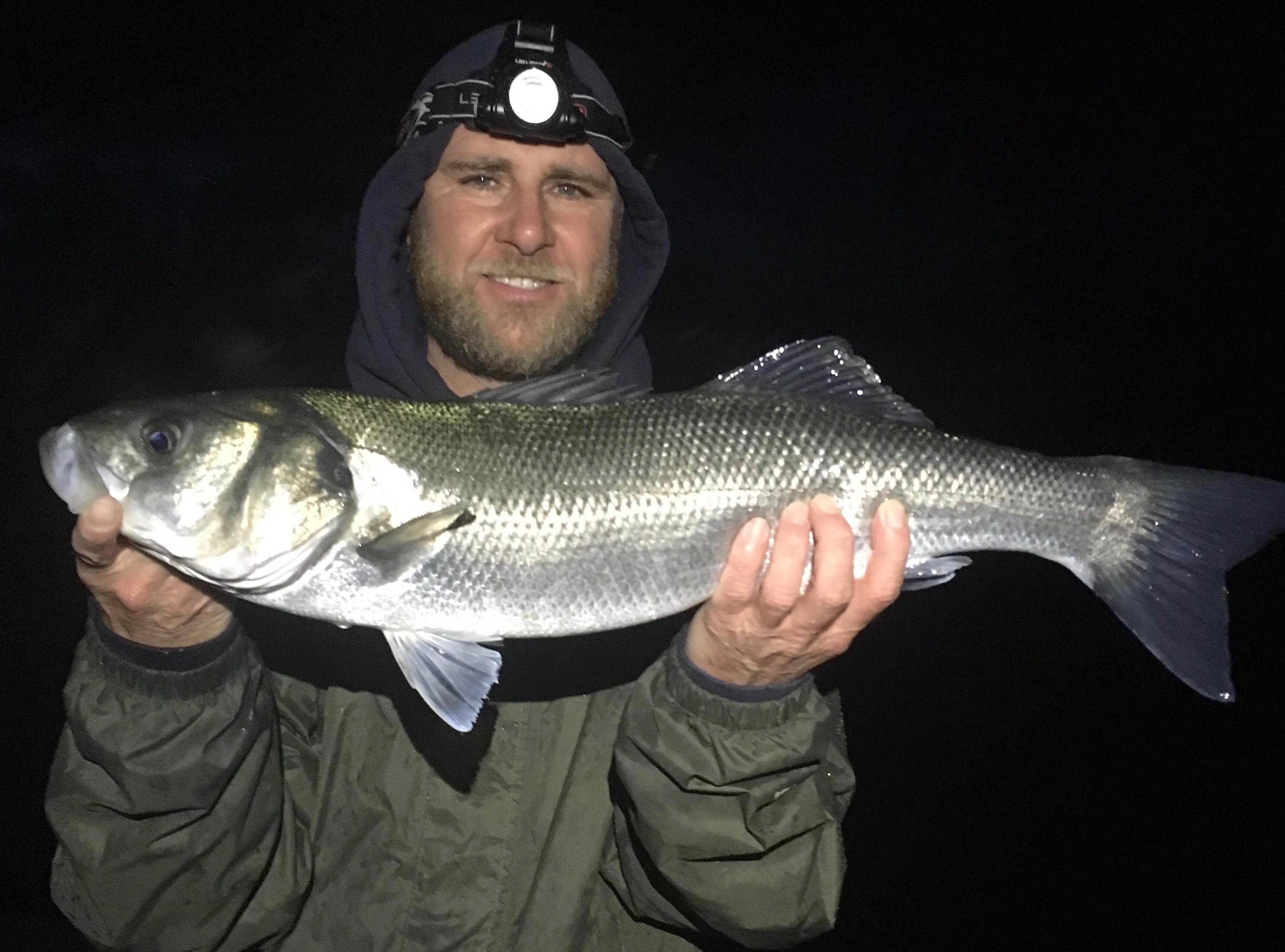
Grey mullet are a challenging species often referred to as the wily grey ghosts. They have a well-deserved reputation for being difficult to tempt which is undoubtedly partially because they are one of the few fish in British waters that are often seen by anglers. Whilst stocks of mullet have declined, they are still undoubtedly one of the most common fish to be found around South Western coasts. They are also a fish that frequent a wide variety of coastal habitats from muddy estuaries, busy harbours to open coasts.
The National Mullet Club http://www.thenationalmulletclub.orgwere founded in 1975 and have since done a great deal of work to promote this sporting fish its pursuit and its conservation.
I joined four keen fellow mulleteers and members of the Combe Martin Sea Angling Club on a club outing to the Fowey estuary in South Cornwall. Club Secretary Nick Phillips had kindly offered to drive and told us to “bring what we liked there is plenty of room in the boot! ” Never tell an angler that even a mullet angler. We bundled it all in just after 6.00am on a warm summers morning and set off on quiet roads full of optimism for the day ahead.
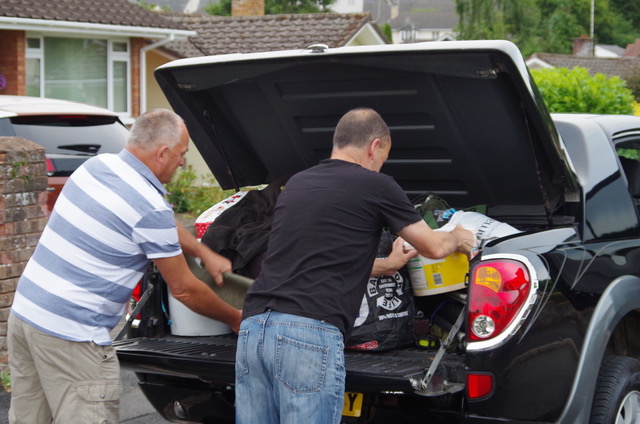
We started off in the lower estuary meeting up with a few members who had been there a couple of hours already and had landed mullet to almost three pounds.
The mark was at the mouth of a creek on the lower estuary opposite the China Clay works that has shipped Cornish Clay to locations around the world. The creek is host to a busy marina packed with a variety of boats with frequent to-ing and fro-ing of boat people.
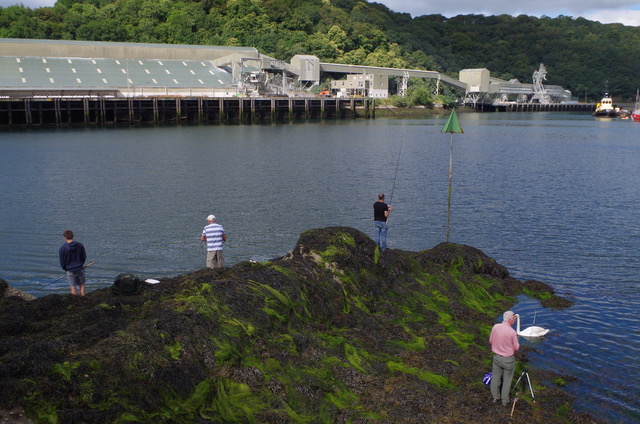
The creek has a distinguished literacy legacy as it was once home to Kenneth Grahame author of the charming book “The Wind In The Willows”. And today we had our own Toad with us as club secretary Nick Phillips held the Nick name “Toad” during his school days.
Most of us started our day suspending our bread-flake hook baits beneath brightly tipped floats. Long rods gave good line control and some members opted to use centre pin reels for direct contact if they were fortunate enough to hook a fish.
Over the next two or three hours we manipulated our floats as they drifted in the swirling currents remaining far too buoyant for our liking. We glimpsed a few mullet in the clear water and a few bites were missed. I was fortunate to hook the only fish of this part of the day a mini mullet that would have failed to make a pound in weight.
After a coffee in the marina café John Shapland and I broke ranks to try half an hour fishing from a Marina pontoon. With no success here it was time to make a move to our second venue of the day. The hamlet of Lerryn is a tranquil village nestled at the top of a wooded creek where the River Lerryn joins the top of the tide.
The creek is said to have inspired Kenneth Grahame who I mentioned earlier and the place oozes history and peacefulness despite the fact that it bustles with tourists on this summer day.
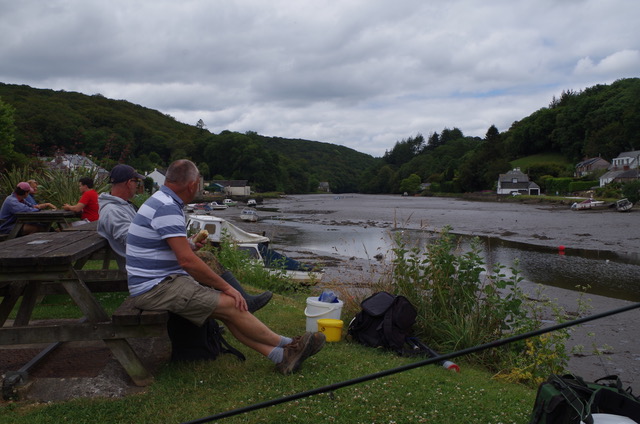
We arrive close to an hour before the flooding tide and enjoy a spot of lunch before assembling our tackles. We all elect to use feeder tactics here with a steady trickle of breadcrumb intended to attract the mullet to our bread flake offerings.
After discussing tactic’s, we all select our favoured positions and await the flooding tide with optimism. Swallows swooped low over the stream, children braved the stepping stones and paddled in the cooling water. Cream teas, ice creams and Cornish pasties were being savoured on the picnic benches in an idyllic scene of a summers Saturday.
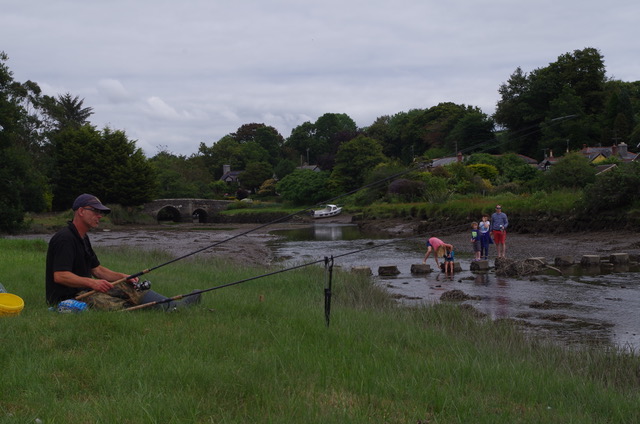
The tide trundles slowly up the muddy creek bringing with it a new found flood of life. We sit quietly on the banks watching the water intently. A few handfuls of mashed bread are tossed on the mud, feeders packed and hooks loaded. Slowly the water rises and with it come the welcome swirls as fish seek food in the warm water.
John Shapland and I have set our stalls on the grassy bank opposite the busy village centre. I watch John Avery, Nick Phillips and his son Jack a hundred yards down the creek and I am pleased to see John with a bent rod and Nick wielding the landing net successfully.

This bodes well I think and its not long before Johns quivertip plunges over and a hard fighting 3lb plus mullet fights the rod and line before being engulfed in the waiting net.
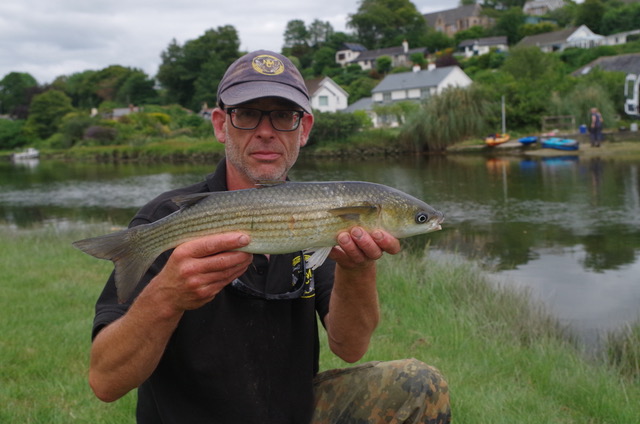
After their initial success further down the creek our three fellow anglers on the far bank move opposite with bites becoming less frequent as the fish move up higher in the creek. Its not long before John Avery is again in action hooking a mullet of a couple of pounds within minutes of relocating.
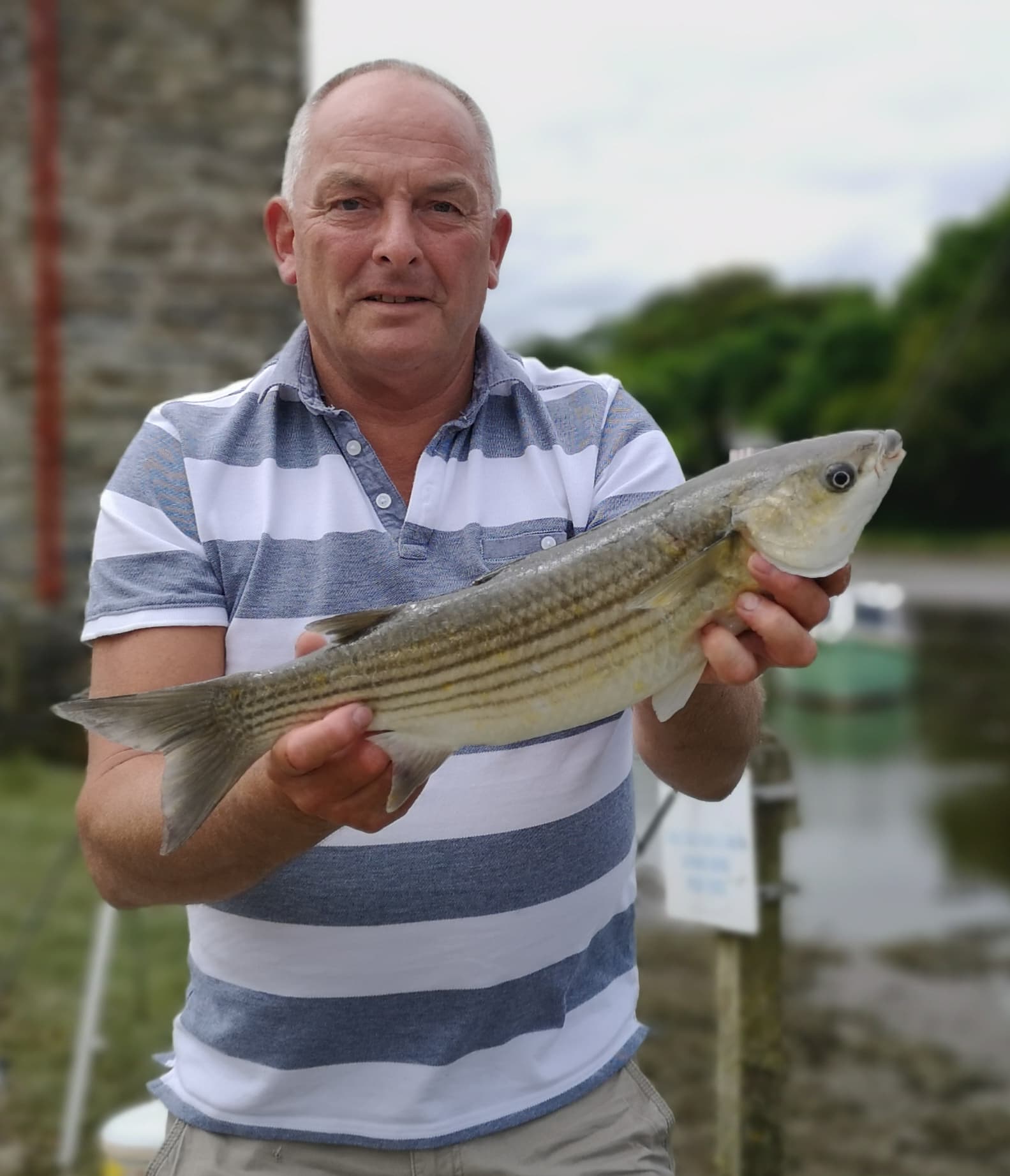
Our attention is focused upon our rod tips that tremble and shake as mullet sample our hook baits. It’s very much a case of sitting on your hands waiting for that decisive movement on the tip before lifting the rod and setting the hook.
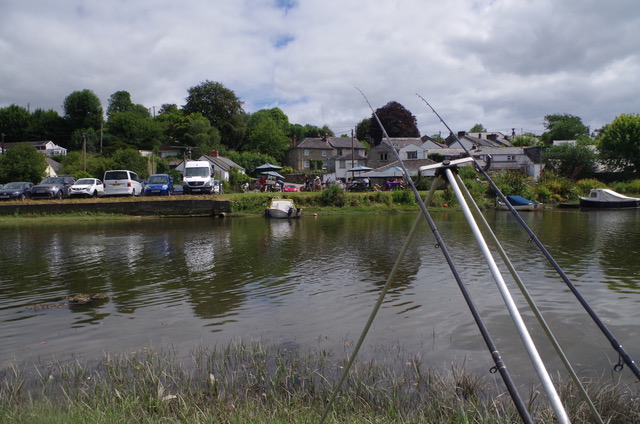
I begin to wonder if I will get that positive bite and lift the rod without connecting a couple of times, perhaps a little too hastily. Eventually there is a serious lunge of the tip of my right hand rod just as I am rebaiting the left the rod. I grab the rod and find myself connected to a hard fighting mullet that pulls the scales to 3lb 8oz.
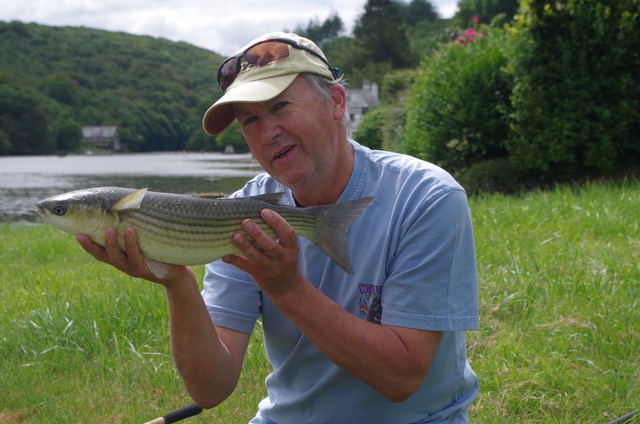
I am pleased to look across the river to see young Jack engaged in an epic battle with a mullet that seems determined to head down river to Fowey. The fish of 3lb 8oz is successfully netted fifty or so yards further down.
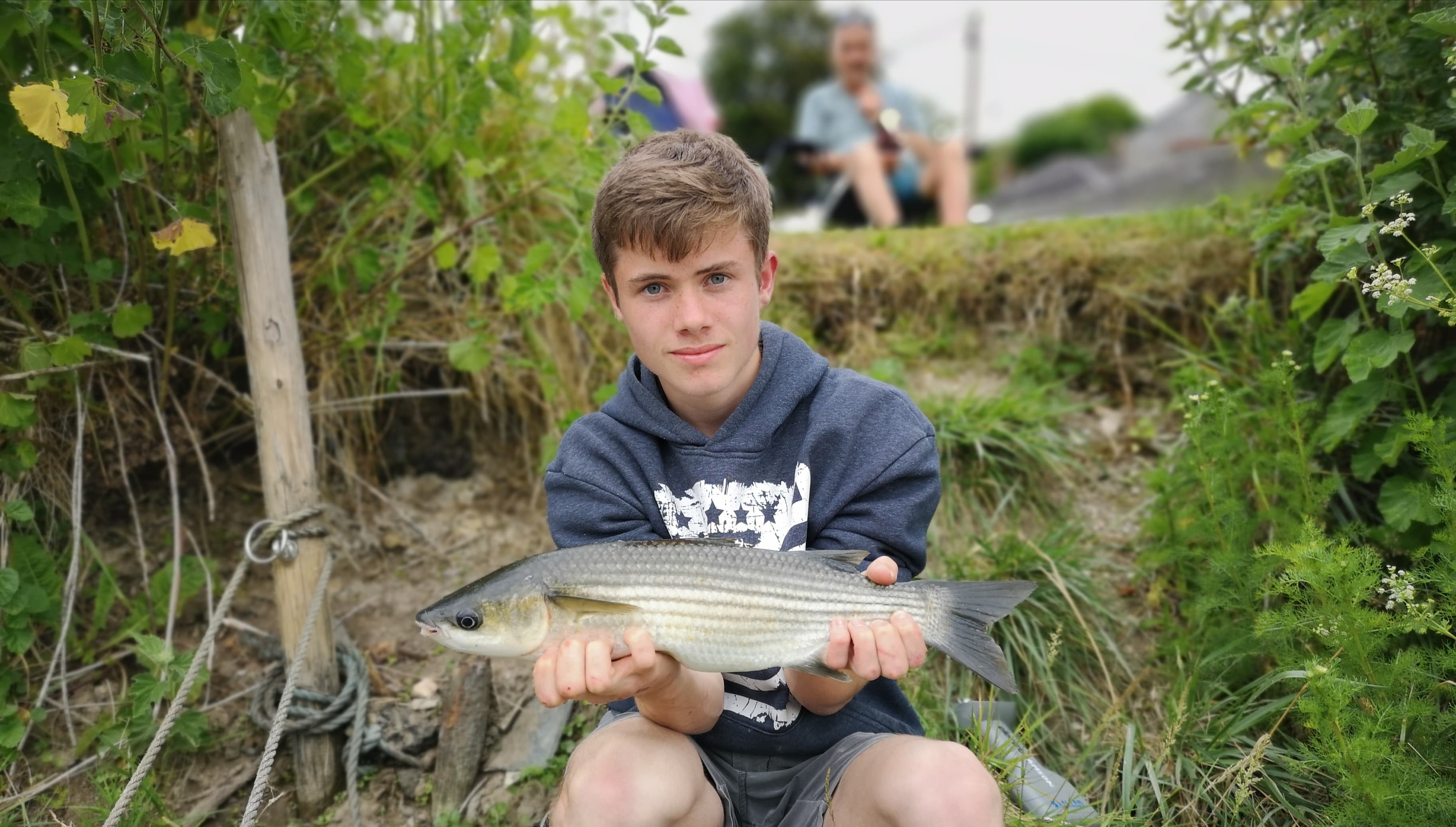
For the next couple of hour’s, the rod tips tremble frequently occasionally plunging over to result in a hooked fish or a cursed miss.
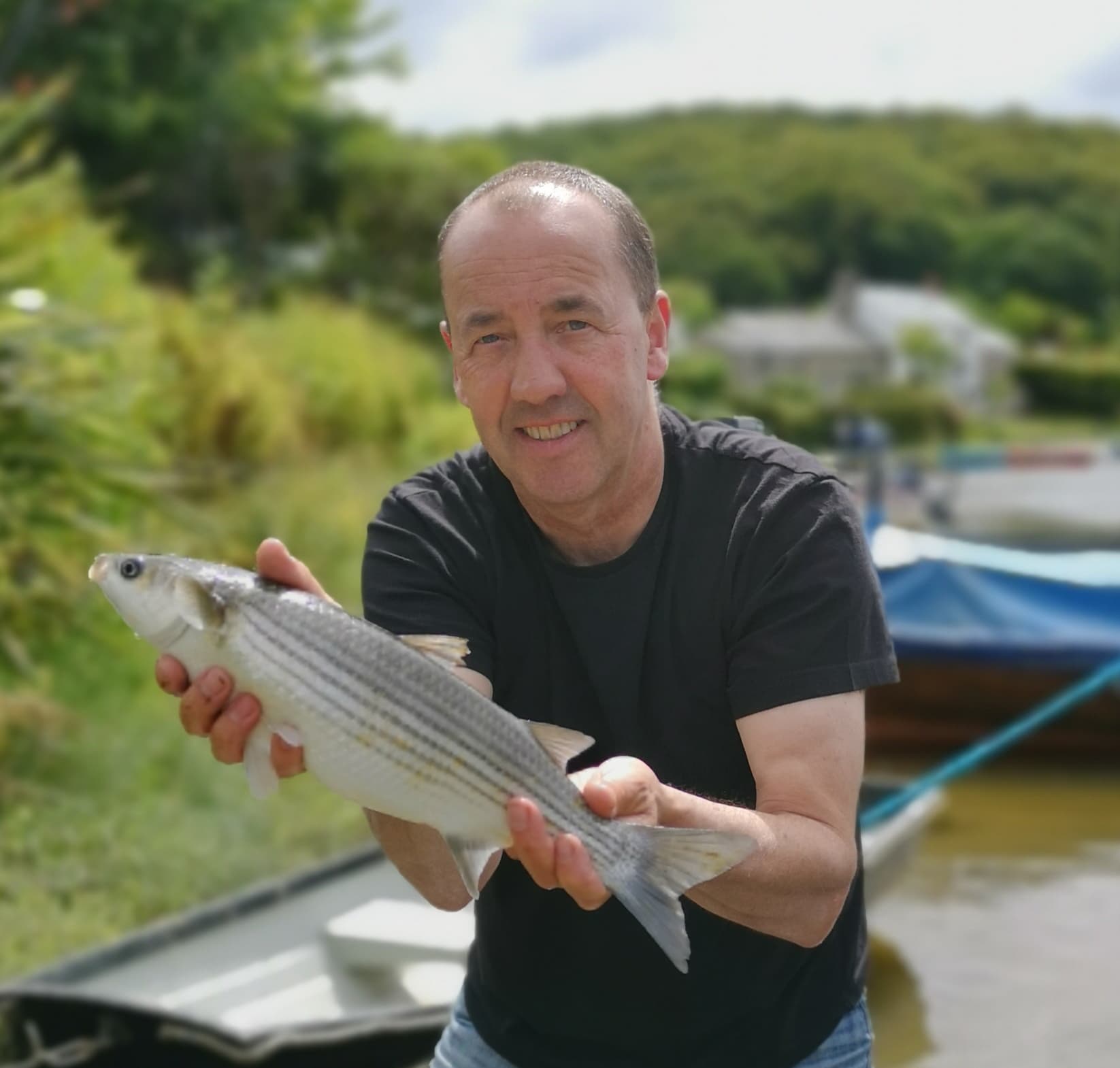
John Shapland and I settled on the grassy bank are able to fish in peace watching the summer scene before us as families gather on the village green, barbecues are lit, canoes and Kayaks are paddled in the calm waters. Several swans drift majestically on the tide within their midst a lone white goose.
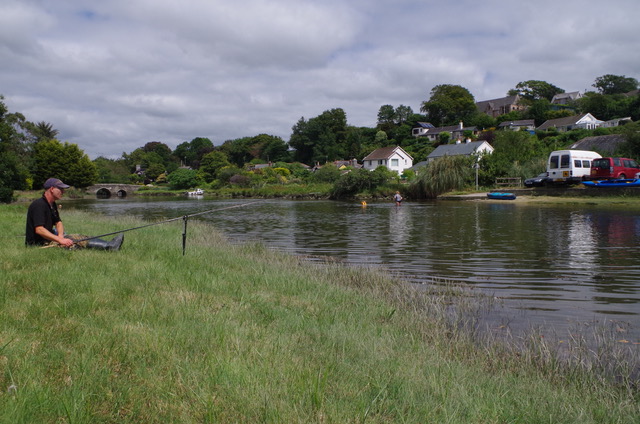
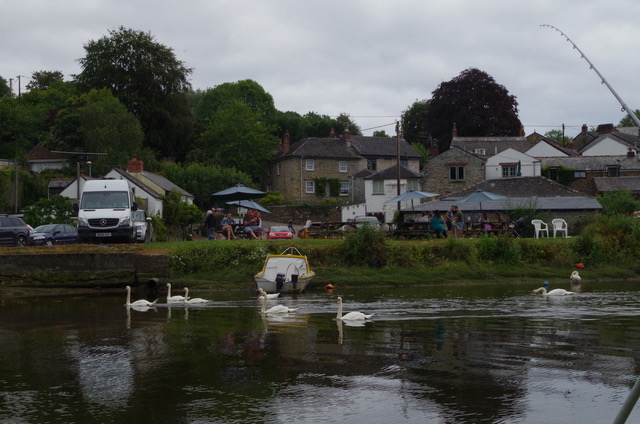
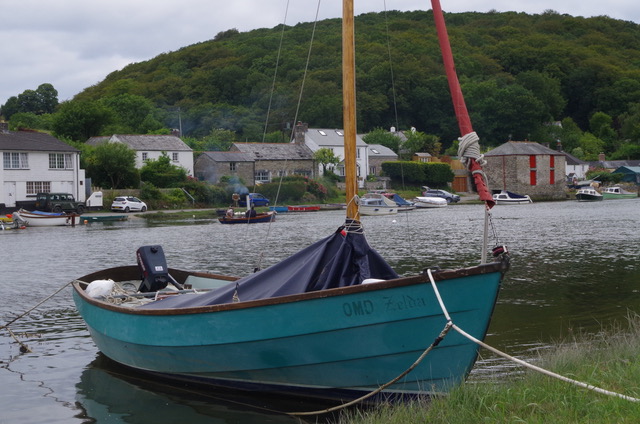
A small steam boat sounds it whistle to add a surreal feel to the afternoon. John Avery as always seems to attract a succession of curious onlookers who ask the same old questions. “ Caught any ?” , “what you fishing for? “ “good eating?”. John replies with his normal polite response. “We have caught a couple, grey mullet we put them back”. “Taste earthy don’t they” “Soft mouths” “Uncatchable!” . And the questions and statements flow in an irritating drivel.
As the tide ebbs away and the stepping stones once more begin to show its time to pack up and head to the charming town of Lostwithiel for Fish and Chips followed by a couple of ales in a local pub with fellow members of the National Mullet Club. The fifteen members fishing had caught over 25 mullet to 3lb 14oz.
The drive back to North Devon was full of future plans and stories of past glory’s.
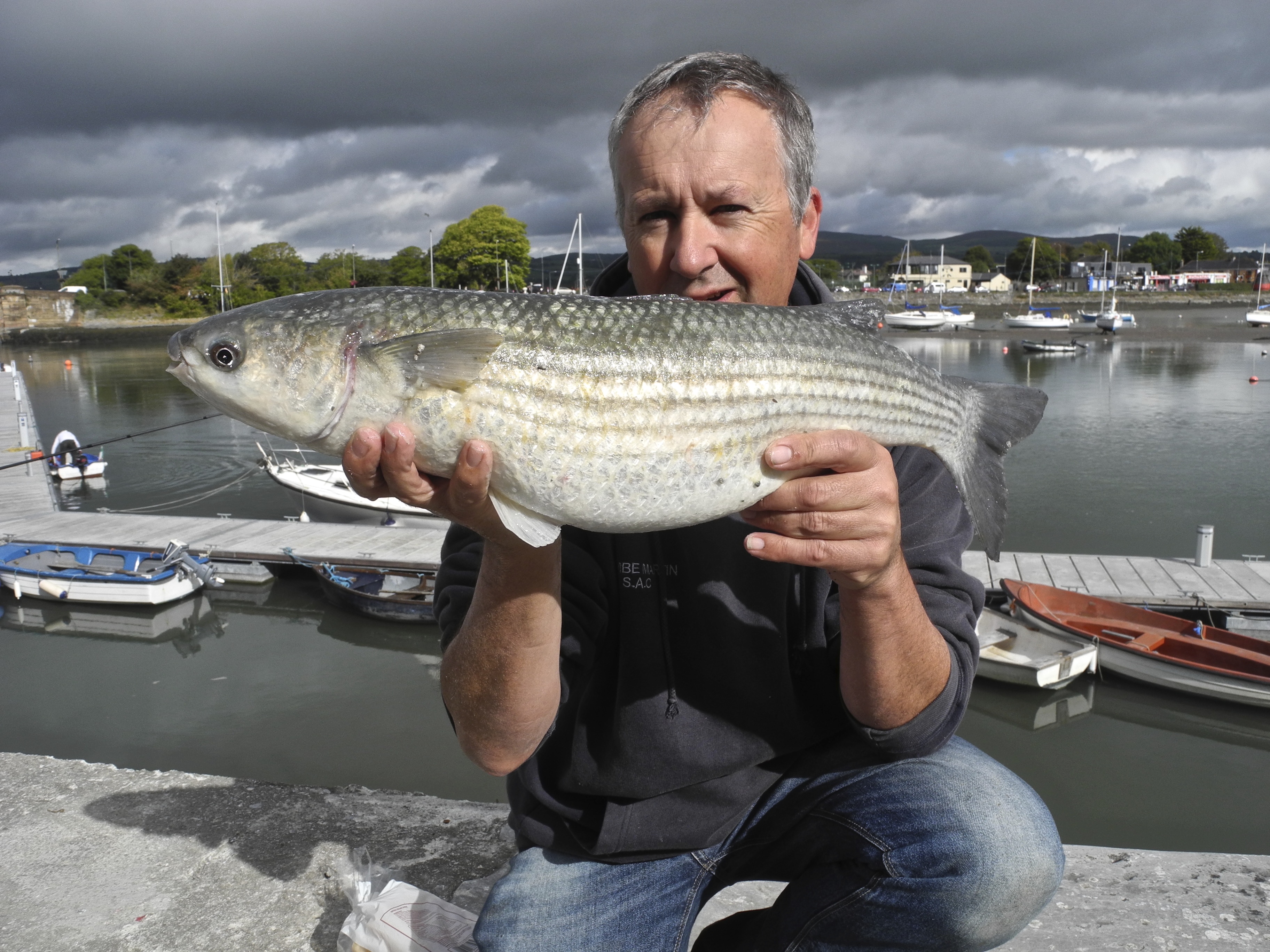
A fellow Combe Martin Sea Angling Club member contacted me recently asking me to write a few words about grey mullet and why they should be given more respect.
I have put a link below to the National Mullet Clubs page that gives plenty of scientific data explaining why the grey mullet is so vulnerable so I suggest you read through that after reading my personal comment.
I started fishing for grey mullet during the early 1970’s whilst on holiday with my parents in Looe on the South Cornish coast. As a teenager who also coarse fished I found the grey mullet that haunted the harbour a great challenge and relished the hard fight they gave on the light tackle used. When I returned home to Combe Martin I was amongst a small number of anglers who targeted the species from many marks around Combe Martin landing numerous fish to over 4lb. Even back then I only kept the occasional fish for the table as fresh mullet from the sea do make good eating. I am ashamed to admit that I also killed fish to weigh in at competitions something I have not done now for at least ten years.
Whilst I believe anglers should have the right to take the occasional fish for the table I no longer do so. I value the fact that mullet provide exciting sport and whilst they can be very frustrating to catch at times they are also one of the most satisfying fish to catch.
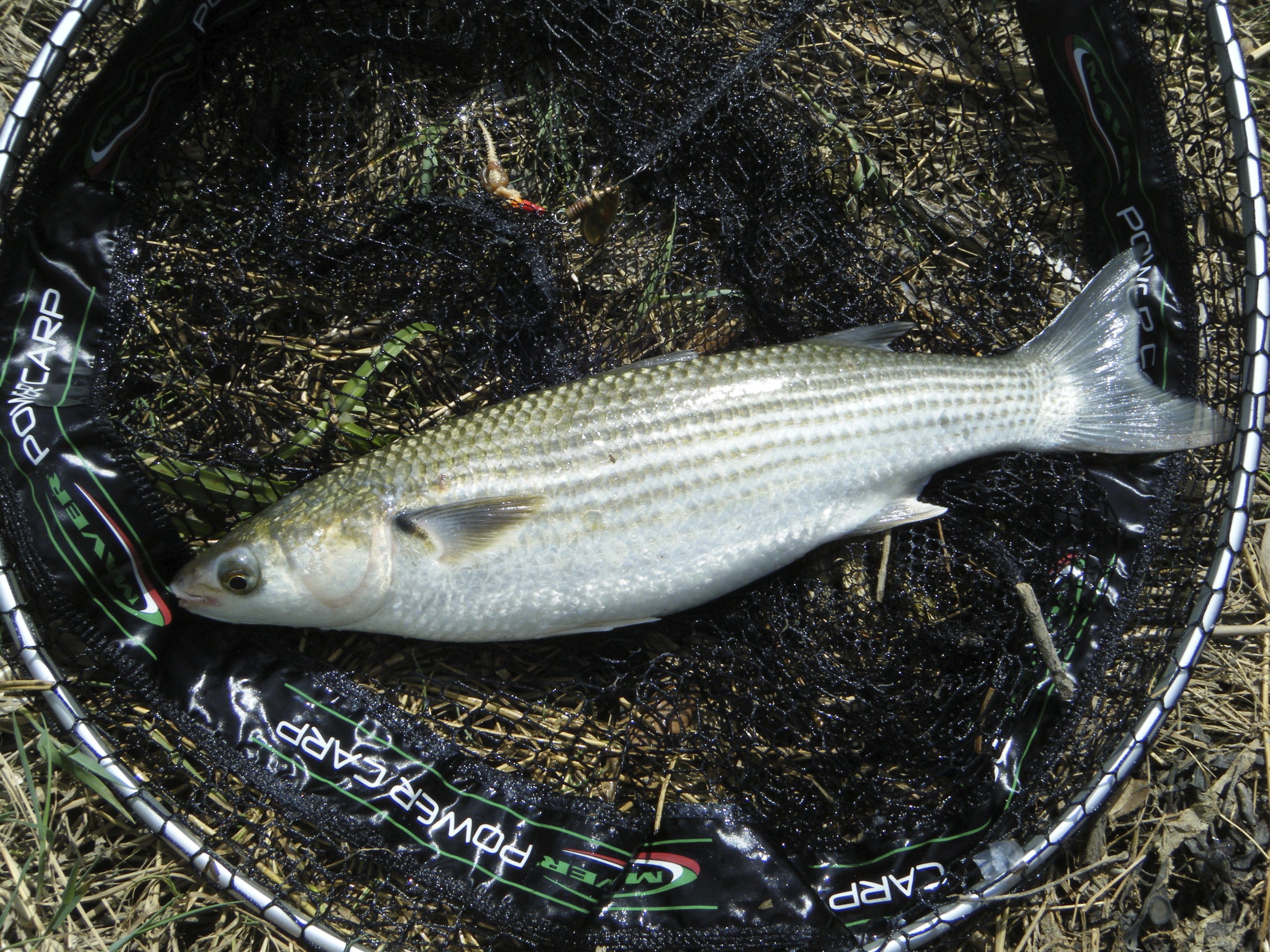
I have seen a dramatic decline in numbers of mullet in some areas and know that the fish are very vulnerable to overfishing. I visited Alderney in the Channel Islands on several occasions when mullet where prolific and grew to a large size. From what I hear there has been a dramatic decline on this Island and on the nearby Island of Sark that we fished over several seasons catching several specimen mullet and glimpsing fish far larger.
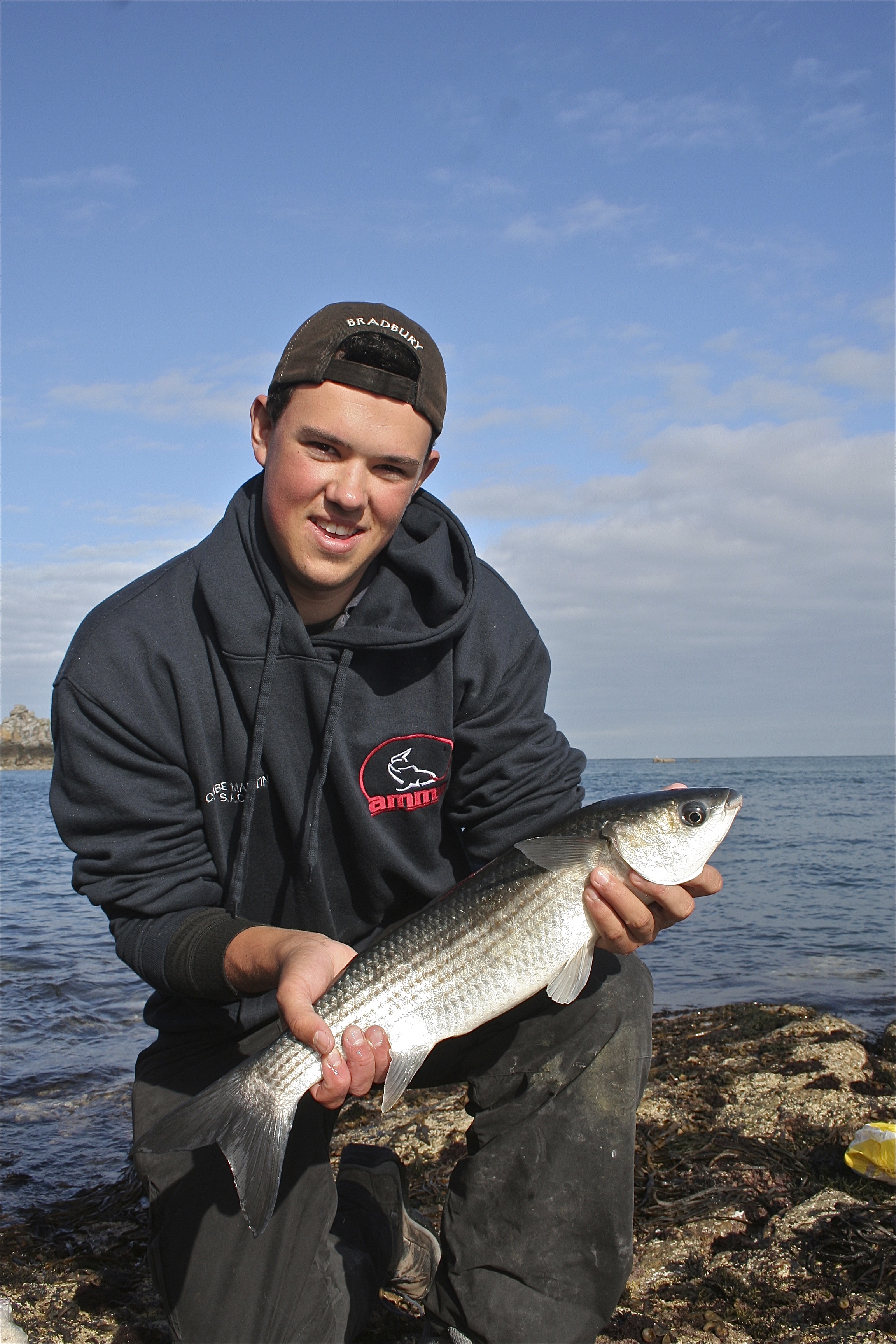
In the past grey mullet were often overlooked by commercial fishing but dwindling stocks of other species due to overfishing has increased interest in these fish. Grey mullet are very slow growing fish not maturing to breeding size until close to ten years old. The fish also return to the same haunts year on year making them extremely vulnerable.
If you value the sport that mullet provide then please return them carefully to the water. If you don’t value them don’t fish for them.
I have memory’s of sad days in the past when I witnessed the despicable act of snatching mullet using large treble hooks. To see these fine sporting fish impaled on hooks dripping blood was a sad sight and gave genuine anglers a bad name.
When fishing for mullet handle the fish with care. Unhook carefully use a weigh sling or plastic bag to weigh the fish and don’t let the fish flap about on the rocks where they can dislodge scales increasing the risk of infection.
Summary
The current need for management measures as the consequence to the gross overfishing for bass can be argued in exactly the same way for grey mullet – the factors which make the bass population
vulnerable are not only applicable to grey mullet but arguably apply in even greater measure to them:
commercial value.
targeted as a means to justify a high bycatch of bass.
increases fishing pressure.
The available data on the populations of the three native UK grey mullet species (Chelon labrosus, Liza aurata and L. ramada) is limited compared with that for more southerly populations (which tend to be faster growing and earlier maturation). However, enough is known to conclude that their slow growth and late maturation will not support high levels of commercial activity, as is evident from the large decline in catches, both commercial and recreational, and other evidence. Tulkani (2017) argues that there are no quotas set and there are no management plans currently in force to regulate either fishery. Clearly future research work should focus on providing the biological data required for the development of sustainable exploitation plans. As research takes time, which grey mullet arguably have not got, then the precautionary principle should be that rigorous measures are taken now to severely curtail, if not eliminate, commercial activity.
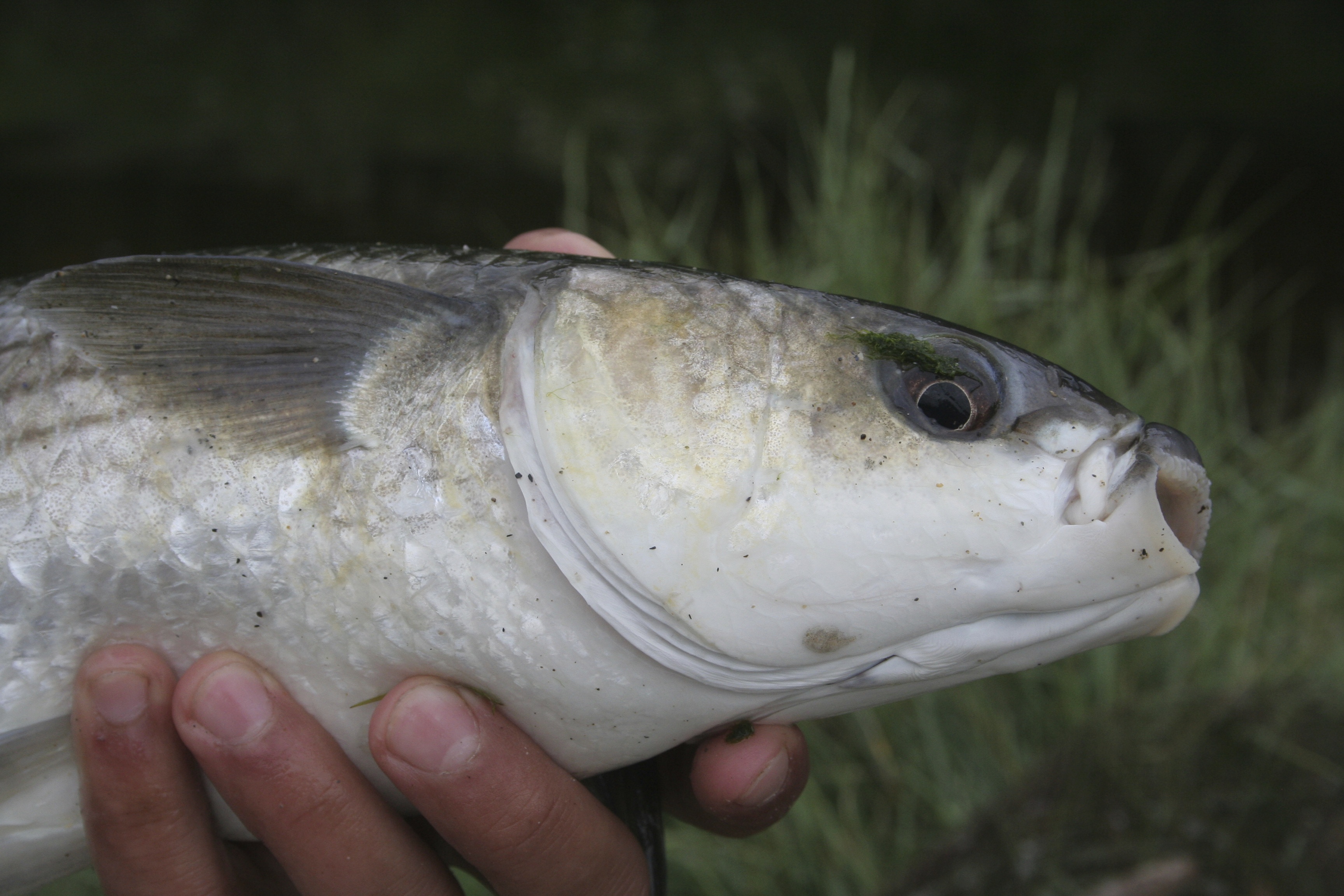
We at the NMC believe these are special fish. As a recreational species they are enigmatic, a challenge worthy of any angler’s attention and fully deserving their reputation as the ‘British bonefish’. Mullet take over ten years to mature, live over twenty-five years, and migrate hundreds even thousands of miles returning to their previous haunts year after year. Their lifecycle makes them extremely vulnerable to overfishing; evidence shows this is already happening as commercial and recreational landings shrink as commercial effort increases.

APPLEDORE SHIPBUILDERS WINTER LEAGUE
Graham Snow secured first and second in Appledore Shipbuilders January Winter League competition landing a brace of flounder scaling 1lb 155/8oz and 1lb 77/8oz. Third place went to Andrew Atkinson with a dogfish of 2lb 1oz.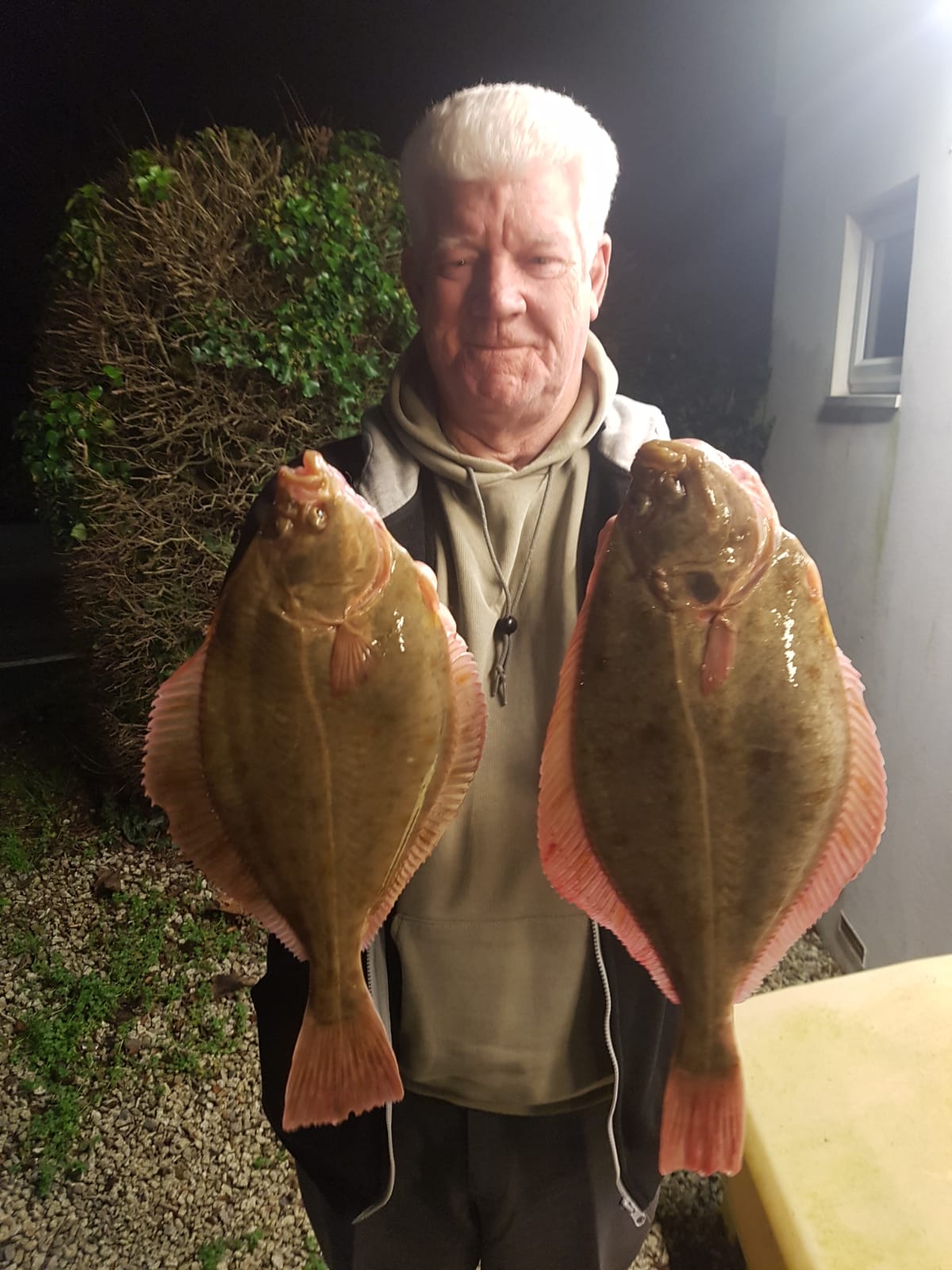
Combe Martin SAC member John Avery landed fine winter thick lipped mullet scaling 5lb 1oz.
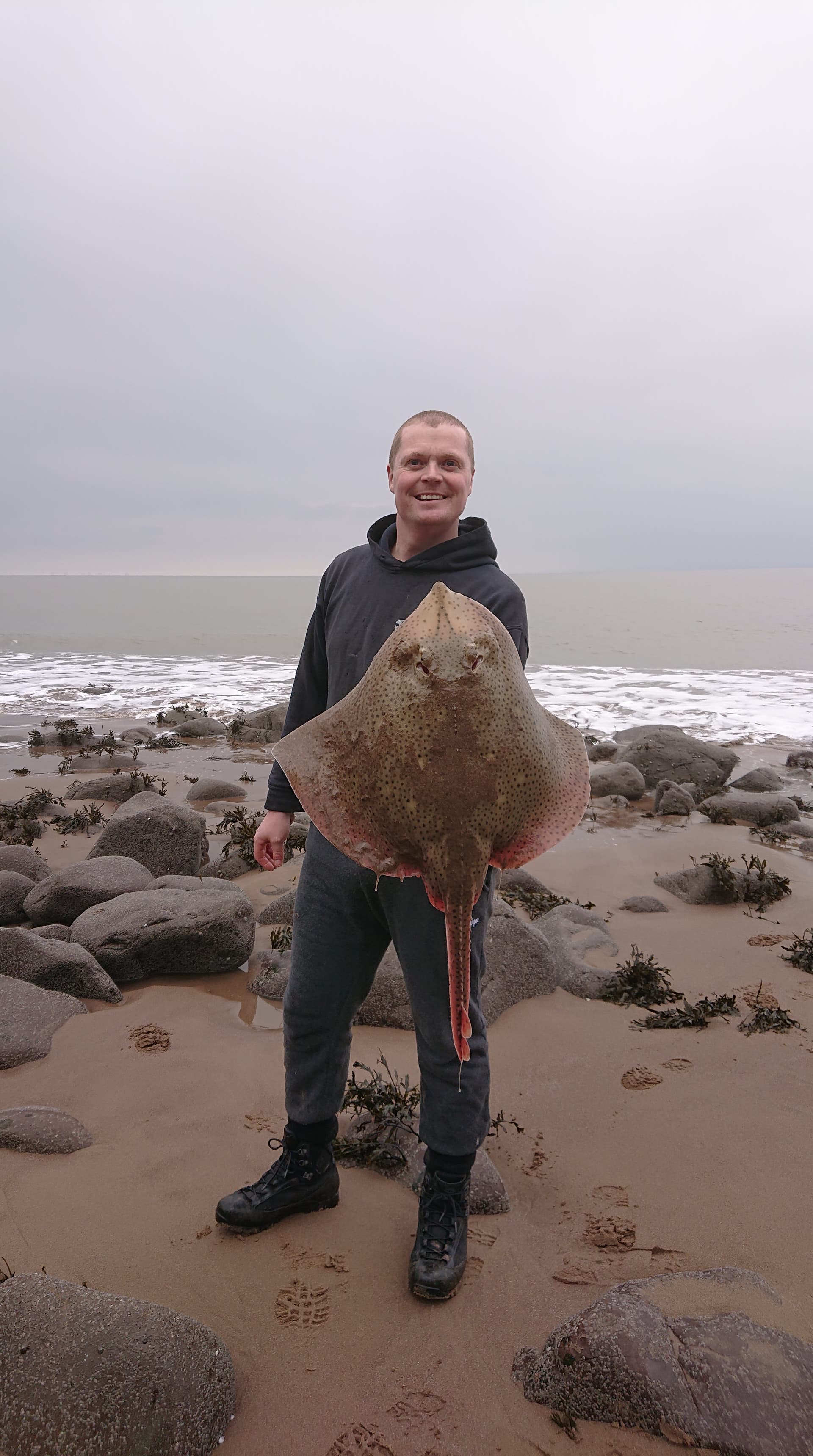
24hour results
1st Antony Smith blonde Ray 13lb 14oz 115.625%
2nd Antony Smith smalleye Ray 9lb 12oz 108.333%
3rd Nathan Clements thornback Ray 9lb 11oz 107.638%
